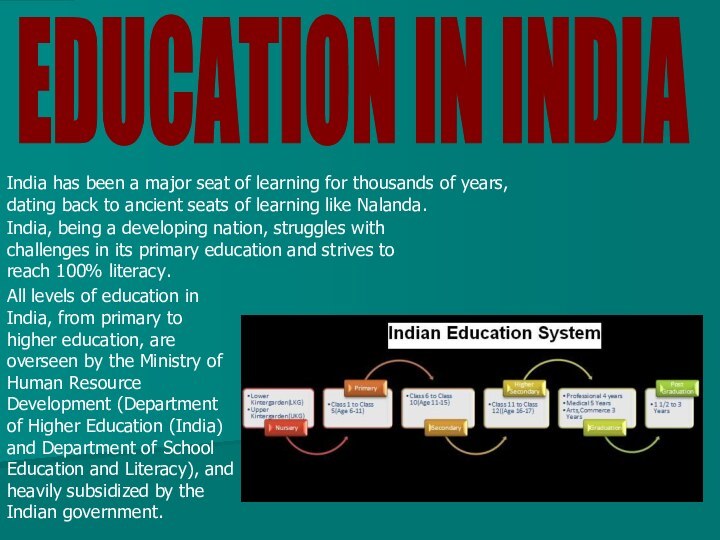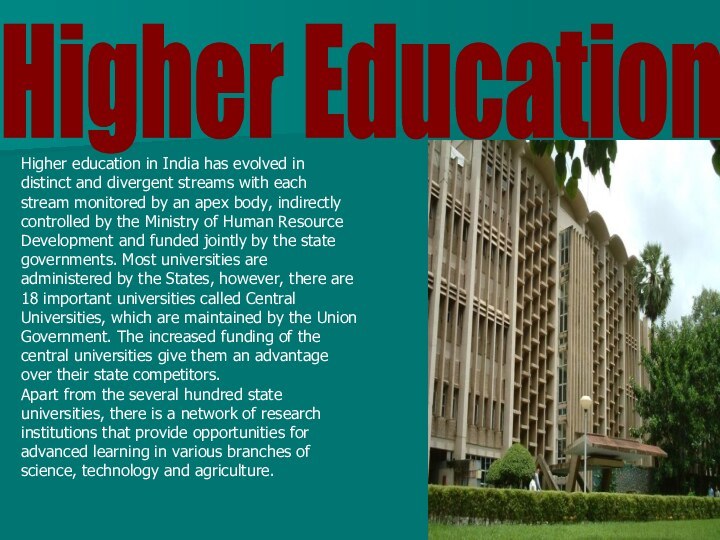in India, namely primary, upper primary, secondary and Senior
secondary. Overall, schooling lasts 12 years.Upper Primary and Secondary school pupils aged eleven through fifteen are organized into classes six through ten, and higher secondary school students ages sixteen through seventeen are enrolled in classes eleven through twelve. In some places there is a concept called Middle/Upper Primary schools for classes between six to eight.
The government is committed to ensuring universal elementary education (primary and upper primary) education for all children aged 6-14 years of age. Primary school includes children of ages six to eleven, organized into classes one through five.







































